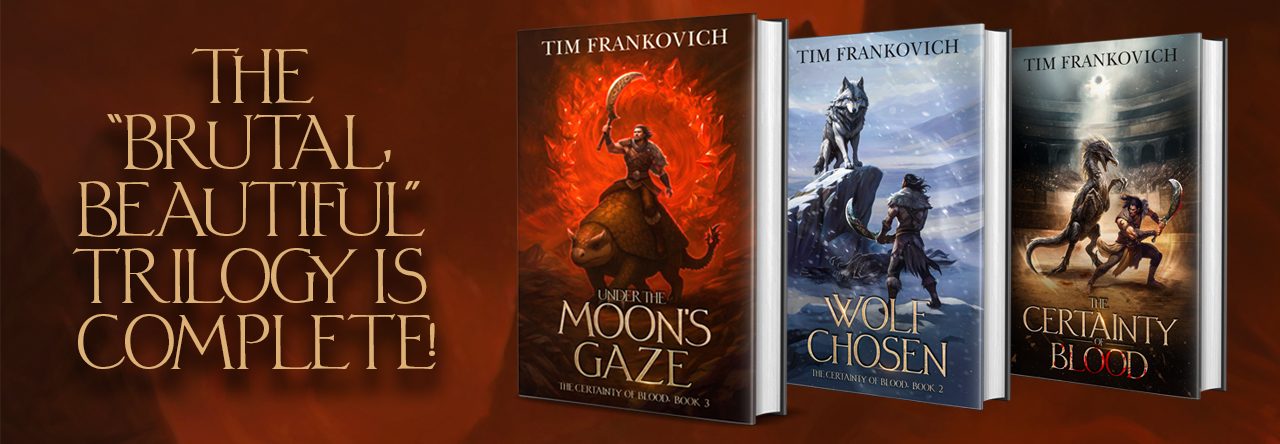Yesterday, I picked up a fantasy novel from the library and started reading. I read the first chapter and my thoughts were something like: “Okay, this character is intriguing in multiple ways. I’m interested in seeing what happens with her.”
The point-of-view (POV) shifted to a second character for the next chapter and my thoughts were something like: “Hm. Don’t really care. This character is kind of boring and the situation she’s in doesn’t interest me at all.”
I found the third character point-of-view to be interesting like the first. So two out of three isn’t bad, right?
Actually, yes. Yes, it is bad.
Think about what’s going to happen as I continue reading. As I hit chapters from the first and third POV, I’ll start each section interested. As I hit chapters from the second POV, I’ll start each section thinking, “Oh. Her again. Ugh.” In fact, several more chapters into the book, this is exactly what is happening.
Now it could very well be that later on in the story, character #2 will have captured my attention with something that hasn’t been revealed yet. But that’s assuming I keep reading the whole book. (I’m stubborn, so I almost certainly will, though I may be tempted to skip over some sections.) Some readers will bail out, toss the book, and never pick it up again.
This is the inherent danger of writing books with multiple points of view. Keeping your readers interested in each character and their story becomes more difficult with more points of view. Opening chapters are vitally important. You need to catch the reader’s interest right away, appeal to their emotions or their curiosity, in order to tie them to each character. In many ways, it’s like writing multiple books at once.
But the introduction isn’t the only place you might lose readers. Switching POV in the middle of high tension can be another. I once read a book (for review) in which the primary protagonist was an elite soldier off on dangerous missions in the Middle East. The secondary protagonist was his girlfriend back home, who… honestly didn’t have much at all to do. This led to a totally ludicrous reading situation: the guy was engaged in a life-threatening situation, bullets flying, etc., and then… the story abruptly shifted to the girl. And what was she doing? Pulling into her driveway and thinking about the guy, wondering what he was doing, how he really felt about her, etc. Hello? He’s about to die! I don’t care about your car and driveway! I don’t want to find out whether you think he’s serious about the relationship; I want to find out if he survives!
That was the most egregious example I’ve run across, but it happens frequently. I’ll admit there are times that a story has shifted points of view… and I’ve skipped over that section to get back to the character I want to read about. I’ve even done this briefly with books by some major writers.
It’s a tough balancing job. Of course people are more interested in reading about people who are more like them – whether that’s gender or personality or whatever. But a skilled writer can make readers invest in characters that are nothing like them. In the example from the first paragraphs of this blog post, the interesting characters are nothing like me, but their stories intrigue me because they contain enough mystery, emotion, and so on, to make me want to keep reading.
Until All Curses Are Lifted has two main point-of-view characters that get approximately equal time. A third character gets a handful of scenes. I had a fourth, but deleted him in the editing process because his story wasn’t compelling enough, and only served to distract from the main characters. It wasn’t easy, but it was necessary to make the book work.
As I work on the second book in the series, the problem has escalated. Now I have at least four major point-of-view characters, and a couple of minor ones. As I did in the first book, I’m writing each of their stories separately before trying to decide how to balance them. It’s a writing challenge, and I love it.
How about you? Read any books where you loved one point-of-view character and hated another?

Justin
I feel your pain… I live your pain to a degree and have suffered through the same quandary while writing. My preference has always been to write in third person omniscient and not worry too much about which character is getting the focus, but feedback from beta readers on some of my earlier work made it clear that they prefer a more “in the mind of the character” perspective, and when I have to switch character perspectives, I need to switch POV’s and switch scenes. I’ve gotten accustomed to that now, but always worry whether or not the supporting characters are as captivating as the “main” characters.
Obviously, in a perfect world shifting the POV wouldn’t be jarring because the reader should optimally care about each character (if the author is doing their job). But that’s not always going to be the case and you could be playing with fire.
In a way I envy those who write books focused on a singular character and write every single scene from that character’s POV, but I’ve tried that and it’s been a real struggle for me. Maybe once I get a bit more accomplished I’ll be able to make that work.